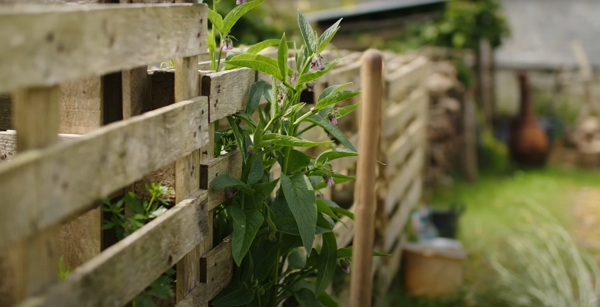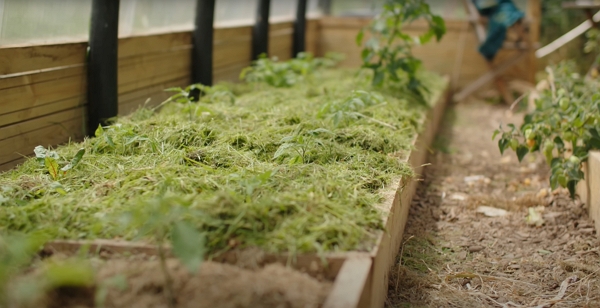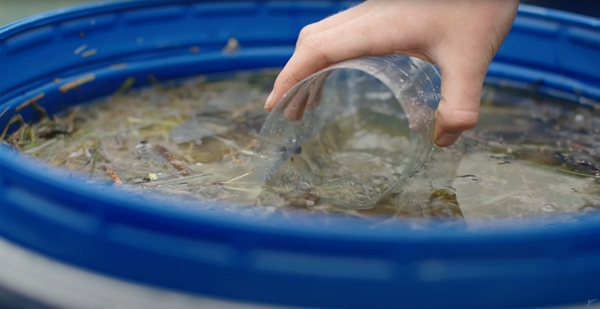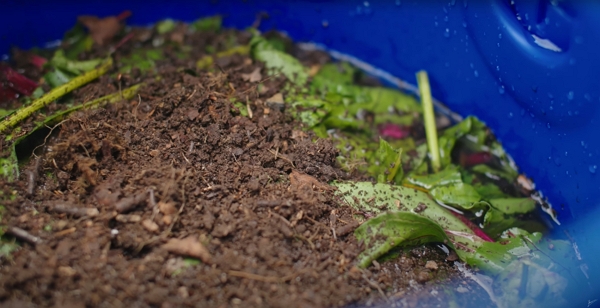Having enough compost can challenge any gardener. Let’s what Huw what it suggests to do.
Thanks to Huw Richards for sharing his wisdom and knowledge! I wrote the following notes watching the video published on Huw Richards’s channel. You can watch it using this YouTube link.
Trick 1: Consider a break year
This is a year you don’t put any compost on an area.
It isn’t something you would do to start with, but rather you use this trick down the line after a few years of mulching.
Trick 2: Dedicate an area to crop that doesn’t need a lot of nutrients
For example, legumes, like filed beans, adapt well to poorer soil.
Trick 3: Compost directly on the beds
When you apply compost, you add carbon, nitrogen, microbes and nutrients.
But simply said, compost is old plants decomposed.
This is what Huw calls Chop, Move and Drop.
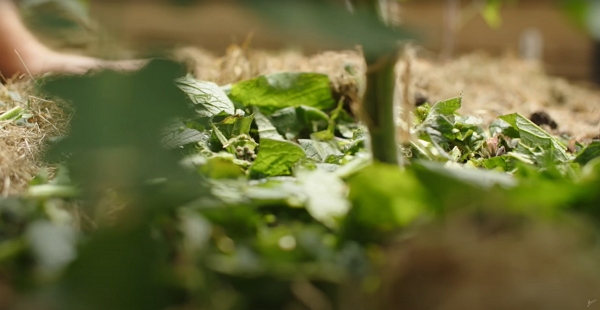 For example, if you grow comfrey (which is a great and easy green material you need in your garden), chop it down, take it and apply it over the beds.
For example, if you grow comfrey (which is a great and easy green material you need in your garden), chop it down, take it and apply it over the beds.
Trick 4: Use grass clippings before it turns to compost
It’s like trick 3, but, in this case, you need to apply it in a thin layer (2 cm to 3 cm) to avoid rotting.
About grass clippings
Be careful to put on grass clipping to avoid:
Sowing a lawn…
- Huw Richards
It helps retaining moisture to keep the plants and the soil life alive.
About slugs
If you have a lot of slugs, use 1 cm layer of grass clippings. Otherwise, they will hide under it and feast on your vegetables.
Trick 5: JADAM microbial solution
You will find the images of the recipe in this short vlog Do This With Potatoes To BOOST Soil & Plant Health and goes as follows.
The tools:
- a square piece of fabric
The ingredients:
- 2 small boiled potatoes
- a handful of leaf mold
- 5 g of sea salt
Instructions:
- cut the piece of fabric
- smash the potatoes on the fabric
- add the leaf mold
- tie the fabric into a sachet
- put in an opaque container
- pour and knead the sachet with rain water (or soft water)
- add the salt
- mix well
- cover
After 1 or 4 days, depending on the weather, you will see bubbles creating, which means microbes multiply in the solution.
To use the solution,
- take 1:20 of the solution mixed with rain water (or soft water).
- apply it to the garden
It provides:
- a big boost to your plants
- a kick-start to the microbial activity
- and a help to break down the material into your soil.
If you apply the solution once a month in the poorest beds, it’s going to make a lot of difference.
Trick 6: Trench planting
It consists in making a trench in which you will dump kitchen waste.
Then you cover it with a little bit of soil and plant whatever you need.
As the plant grows, the kitchen waste will be already decomposing and it will provide to the plant the nutrients from that degradation.
Trick 7: Plant fermentation
You can make some from:
- stinging nettle
- grass clipping
- swede
- and many more
To make it, check his details vlogs on the topic:
- EASY Low-Cost Plant Feed to Boost Crop Yields & Health
- GRASS - The Most Valuable FREE Resource for Growing Food
